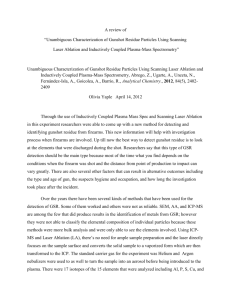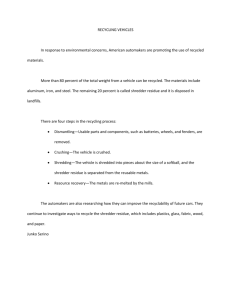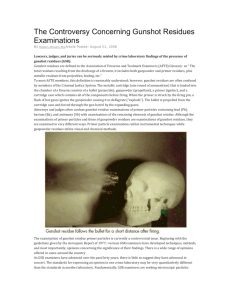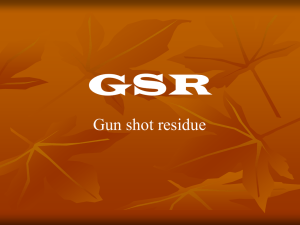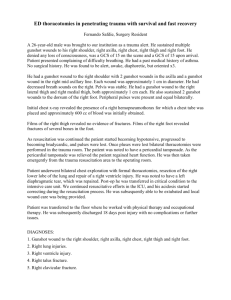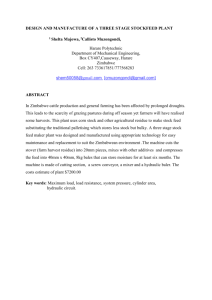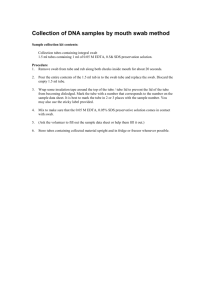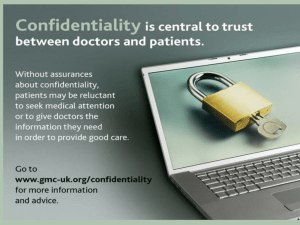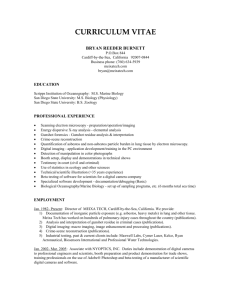LAB_A SmokingGun_ProcedurePreQuesDataTablesPostQuest
advertisement
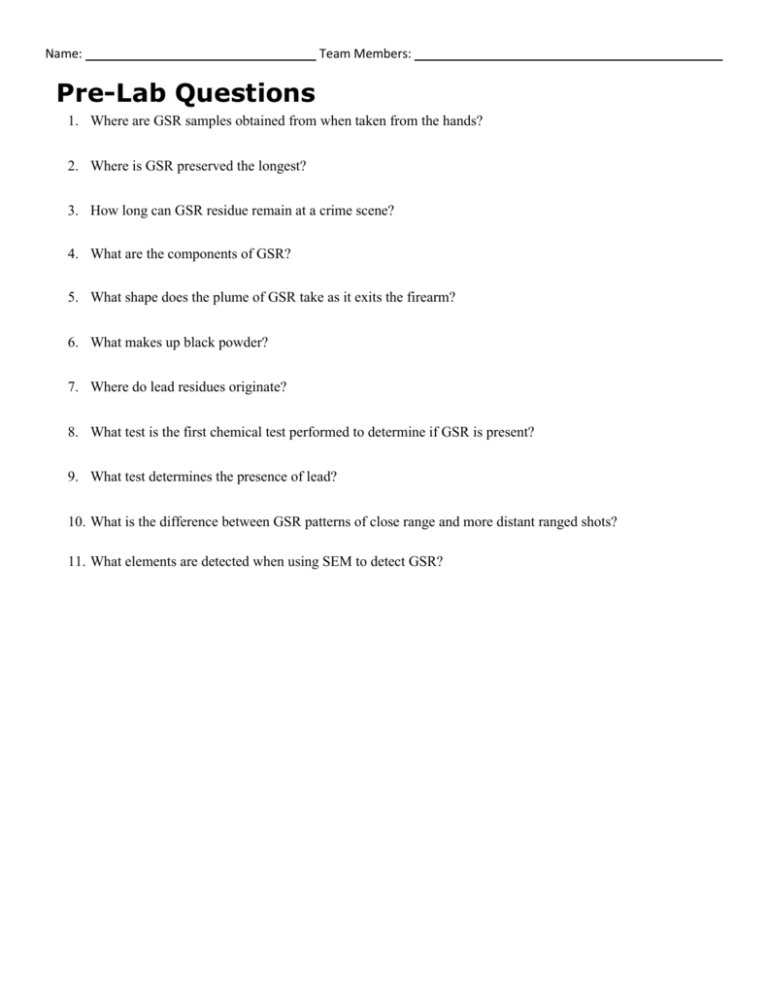
Name: Team Members: Pre-Lab Questions 1. Where are GSR samples obtained from when taken from the hands? 2. Where is GSR preserved the longest? 3. How long can GSR residue remain at a crime scene? 4. What are the components of GSR? 5. What shape does the plume of GSR take as it exits the firearm? 6. What makes up black powder? 7. Where do lead residues originate? 8. What test is the first chemical test performed to determine if GSR is present? 9. What test determines the presence of lead? 10. What is the difference between GSR patterns of close range and more distant ranged shots? 11. What elements are detected when using SEM to detect GSR? Lab Procedure Part 1: Gunshot Residue Detection Test 1. Obtain the foam swabs collected from all crime scenes and the positive and negative controls. 2. Starting with the positive control foam swab, place two alcohol swabs on a clean, flat surface, such as the bottom of a Petri dish or a weigh boat. 3. Rub one side of the positive control foam swab onto the first alcohol swab. Flip the foam swab to the other side and repeat the procedure with the second alcohol swab. 4. Place one drop of sodium rhodizonate on the first alcohol swab and observe the reaction. If a red color change is observed, one of the metals specific to gunshot residue has been detected. 5. Place one drop of the diphenylamine solution on the second alcohol swab and observe the reaction immediately. If a blue color change is observed, the test has detected nitrates on the swab. 6. Repeat this testing procedure for the negative control and the evidence foam swabs. 7. Record the results from each swab. 8. When finished with your experiment, formulate a hypothesis as to the events surrounding the crime. Activity 1: Scanning Electron Microscope View the video clips to learn about the operation of the Scanning Electron microscope and to look at actual gunshot residue evidence. Part 2: Examining the Evidence 1. Examine the photos you received from gunshot residue found at the crime scene. termine which photos look like residue measure their size. Describe the particles explain why they could be gunshot residue. the Deand and 2. Examine the spectra you received. Identify the three elements that are necessary for the substance to be confirmed as gunshot residue. 3. Measure the peaks for Lead (Pb), Barium (Ba), and Antimony (Sb). Compare the difference in the quantities of each element. Data Collection and Calculations Presumptive Tests Swab Number Positive Control Negative Control 1-1 1-2 1-3 2-1 2-2 2-3 Victim Sodium rhodizonate (+/-) Diphenylamine (+/-) N/A N/A Data from the SEM: Sample Number 1 2 3 4 5 6 7 8 9 10 11 12 Contain Lead? Quantity? (# of Peaks) Contain Barium? Quantity? (# of Peaks) Contain Antimony? Quantity? (# of Peaks) Size of particle (diameter in mm) Post-Lab Questions 1. Describe the color changes you observed in each test. 2. Which swabs tested positive for gunshot residue? 3. Which swabs tested negative for gunshot residue? 4. What does this evidence mean in terms of the crime? What possible scenario could account for the presence of gunshot residue (or lack thereof) on the above surfaces? 5. What three elements are required for a particle to be identified as gunshot residue? 6. Did any of the samples include all three elements? 7. Did any of the spectra contain only two of the elements? If so, which element was missing? 8. Based on the images and the spectra, which particles did your group identify to be gunshot residue? 9. In your opinion, what were the events surrounding the crime?
